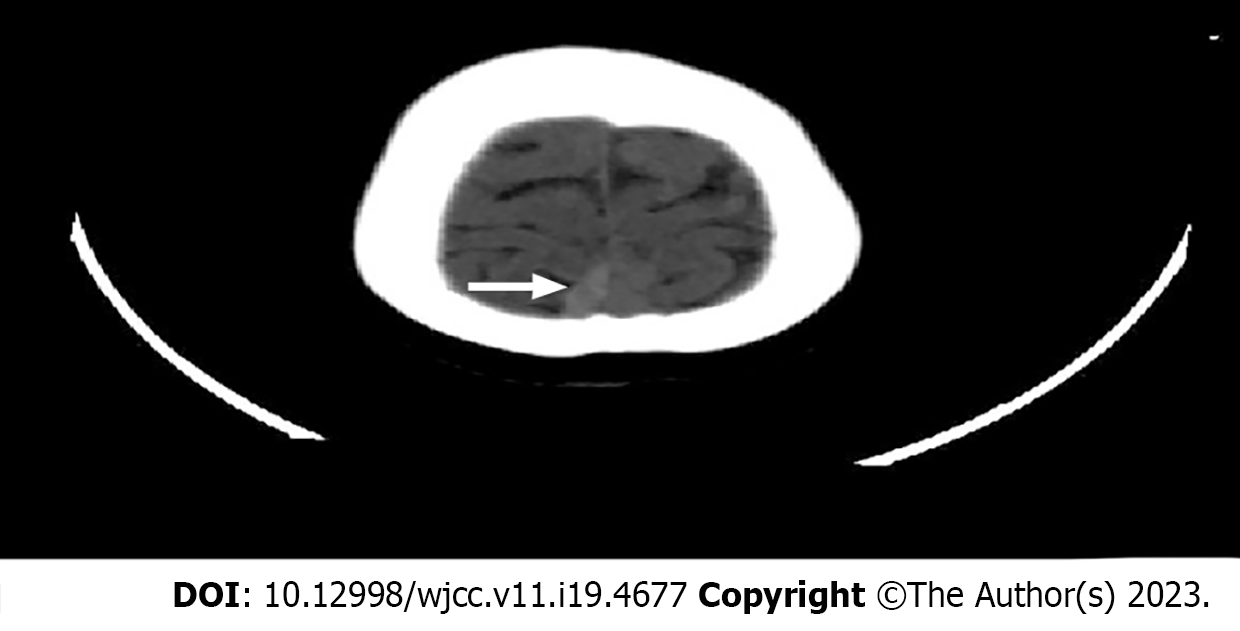Copyright
©The Author(s) 2023.
World J Clin Cases. Jul 6, 2023; 11(19): 4677-4683
Published online Jul 6, 2023. doi: 10.12998/wjcc.v11.i19.4677
Published online Jul 6, 2023. doi: 10.12998/wjcc.v11.i19.4677
Figure 1 Head computed tomography with nodular, linear hyperdense shadow in the right parietal cerebral cortex and superior sagittal sinus (white arrow).
Figure 2 Head magnetic resonance imaging with magnetic resonance venography.
A: A right superior sagittal sinus strip of low signal was seen on T1-weighted imaging; B: The right superior sagittal sinus strip of low signal was seen on T2-weighted imaging; C: T1-enhanced scan shows a low signal in the right superior sagittal sinus; D: The lesion is not clearly displayed on contrast-enhanced magnetic resonance venography.
Figure 3 Head and neck computed tomographic venography.
A hypointense filling defect was seen in the parasagittal sinus cortical vein of the right parietal lobe, and venous thrombosis was considered (white arrow).
Figure 4 Review of head magnetic resonance imaging.
A: No abnormal signal shadow was seen in the right sagittal sinus on T1-weighted imaging; B: No abnormal signal shadow was seen in the right sagittal sinus on T2-weighted imaging; C: No abnormal signal shadow was seen in the right sagittal sinus on T1-enhanced scan.
- Citation: Huang P. Rare cause of cerebral venous sinus thrombosis: Spontaneous intracranial hypotension syndrome: A case report. World J Clin Cases 2023; 11(19): 4677-4683
- URL: https://www.wjgnet.com/2307-8960/full/v11/i19/4677.htm
- DOI: https://dx.doi.org/10.12998/wjcc.v11.i19.4677












